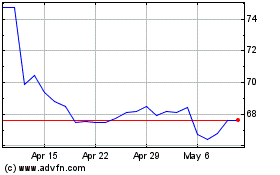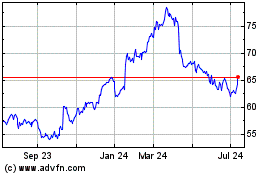The fourth quarter earnings season is over, and now the focus turns
to the first quarter. While it “officially” kicks off after the
bell today when
Alcoa (AA) reports, we already
have 26 (5.2%) first quarter reports in from the S&P 500.
Alcoa, though, like the Master’s -- is but the first of the majors.
It will not be the only one in the early going. We will also hear
from
Google (GOOG),
J.P. Morgan
(JPM) and
Bank of America (BAC) this week.
Together, they should provide some good clues to the overall
direction of earnings season.
One firm which is not a household name but we be good to keep an
eye on is
Fastenal (FAST). It is the number one
maker of fasteners -- things like screws and bolts -- which go into
all sorts of other things. If it reports strong results, it is a
good bet that the rest of the market will, as well.
Good Start, but Earnings Growth to Slow
While far too early to draw any conclusions, it looks like we are
off to a good start on the first quarter, with reported net income
growth of 22.7%, down just slightly from the 25.7% growth those
same 26 firms reported in the fourth quarter. That, however, is not
expected to last. The consensus is looking for a dramatic slowdown
in growth for the remaining firms, with total net income rising
just 7.71%.
Financial firms setting aside much less than a year ago for bad
debts were a big part of the earnings story for the fourth quarter,
and a big part of the deceleration in year-over-year growth has to
do with a much higher base, particularly in the Financials in the
first quarter of 2010 than in the fourth quarter of 2009. If the
Financial sector is excluded, total net income rose 19.8% from a
year ago, in the fourth quarter, and in the first quarter it is
expected to slow to 9.3%.
Positive Surprises Expected?
Given the trend of positive earnings surprises, I would be shocked
if the actual growth rate is that low. It is almost certain to be
in the double digits again. Revenue growth in the fourth quarter
was healthy at 8.28%. Looking ahead to the first quarter, though,
those firms yet to report are expected to post year-over-year
revenue growth of just 4.14%.
Financials are the key reason for the slowdown in revenue growth;
if they are excluded, reported revenue growth is expected to be
9.08%. Tougher year-over-year comparisons are a big part of the
story.
Net Margins to Expand Slightly
Net margin expansion has been a driver of earnings growth, but that
expansion is slowing down, particularly if one excludes the
Financials. Overall, net margins are expected to come in at 9.03%
in the first quarter, up from 8.73% a year ago, and from 8.92% in
the fourth quarter. However, excluding the Financials, net
margins are expected to only creep up to 8.29% from 8.27% a year
ago, and down from 8.81% in the fourth quarter.
Among the handful of S&P 500 companies that have already
reported for the first quarter, overall net margins are 7.92%, up
sharply from 7.06% a year ago and from 7.06% in the fourth quarter.
Strip away the Financials that have already reported and the
picture is different, rising to 7.62% from 7.86% a year ago and
from the 7.30% reported in the fourth quarter.
Do not make too much of the level of reported net margins being
significantly lower than the expected net margins. That is due to
the reporting firms being very overweighted towards retailers (many
have February fiscal period ends), which tend to be lower-margin
businesses.
On an annual basis, net margins continue to march northward. In
2008, overall net margins were just 5.88%, rising to 6.39% in 2009.
They hit 8.59% in 2010 and are expected to continue climbing to
9.59% in 2011 and 10.31% in 2012. The pattern is a bit
different, particularly during the recession, if the Financials are
excluded, as margins fell from 7.78% in 2008 to 7.09% in 2009, but
have started a robust recovery and rose to 8.24% in 2010.
They are expected to rise to 8.84% in 2011 and 9.37% in 2012.
Another Good Year Overall?
The expectations for the full year are very healthy, with total net
income for 2010 rising to $790.5 billion in 2010, up from $545.1
billion in 2009. In 2011, the total net income for the S&P 500
should be $909.5 billion, or increases of 45.3% and 15.1%,
respectively. The expectation is for 2012 to have total net income
passing the $1 Trillion mark to 1.036 Trillion.
That will also put the “EPS” for the S&P 500 over the $100 “per
share” level for the first time at $108.50. That is up from $57.13
for 2009, $83.16 for 2010, and $95.67 for 2011. In an environment
where the 10-year T-note is yielding 3.54%, a P/E of 16.1 based on
2010 and 14.0x based on 2011 earnings looks attractive. The P/E
based on 2012 earnings is 12.3x.
With far more estimates being raised than being cut (revisions
ratio of 1.32), one has to feel confident that the current
expectations for 2011 will be hit, and more likely exceeded.
Analysts are raising their 2012 projections at an even higher rate,
with a revisions ratio of 1.74. While a lot can happen between now
and the time the 2012 earnings are all in, upward estimate momentum
means that the current 2012 earnings are more likely to be exceeded
than for them to fall short.
This provides a strong fundamental backing for the market to
continue to move higher. The fact we are in the third year of the
presidential cycle (almost always the best of the four, and by a
big margin). We have a Democrat in the White House, which has
historically meant good things for the stock market, with an
average annualized return over the last 50 years more than triple
that when the GOP holds the Oval Office. Few, if any, binomial
variables have as much statistical significance. Those factors
should combine to make this a good year for the market.
Government Not Shutdown - But At What Cost?
That does not mean that all is smooth sailing ahead. We managed to
avoid a government shutdown, but only at the cost of large spending
cuts that will slow the economy. Those should probably shave at
least a half point off of the growth we would have had in 2011, and
probably result in hundreds of thousands of fewer jobs being
created.
The lower growth will result in lower tax collections, so the
impact on the budget deficit will be much less than the amount
advertised. Job creation remains sluggish, but is starting to show
signs of picking up. We created 230,000 jobs in the private sector
in March, down from 240,000 in February, but that is after a big
upward revision to the February numbers.
However, State and Local governments laid off a total of 15,000
people for the month, on top of 46,000 pink slips the month before.
Those jobs count just like private sector jobs, and are a major
headwind to bringing down the total number of unemployed. The idea
that one can reduce unemployment by cutting jobs is positively
Orwellian, and it is hard to believe the advocates of this message
are taken so seriously.
The household survey has been much more upbeat, showing growth of
291,000 jobs in March, on top of 250,000 gained the month before.
The unemployment rate fell to 8.8%, and it was as high as 9.8% as
recently as November.
International Headwinds Remain
The international situation clearly has the potential to abort the
recovery as well. The disaster in Japan will clearly slow its
economy dramatically in the first quarter, although much of that
growth will be made up later in the year as the reconstruction
process gets underway. Many U.S. products have parts that are made
in Japan, and that is likely to disrupt production here.
The turmoil in the Middle East is not going away, and that is
likely to keep oil prices both high and volatile. High oil prices
will also act as a depressing force on the economy. It is worth
noting that many of the S&P 500 firms seeing the largest
increases for this year’s earnings are oil companies. Owning some
oil company shares can be a great hedge for rising prices at the
pump.
The debt crisis in Europe is not going away with Portugal now also
getting bailed out, even as the ECB makes life tougher on the PIIGS
by raising rates. On the plus side, the dollar has been weak, and
that should improve the trade deficit, particularly the non-oil
side, and that will be a significant positive for the economy.
It also means that the foreign operations of U.S. companies will be
much more profitable when the results are measured in dollars.
Inflation, other than in food and energy, is well contained, and
that should let the Fed stay on Easy Street as far as monetary
policy is concerned.
ALCOA INC (AA): Free Stock Analysis Report
BANK OF AMER CP (BAC): Free Stock Analysis Report
FASTENAL (FAST): Free Stock Analysis Report
GOOGLE INC-CL A (GOOG): Free Stock Analysis Report
JPMORGAN CHASE (JPM): Free Stock Analysis Report
Zacks Investment Research
Fastenal (NASDAQ:FAST)
Historical Stock Chart
From May 2024 to Jun 2024

Fastenal (NASDAQ:FAST)
Historical Stock Chart
From Jun 2023 to Jun 2024
